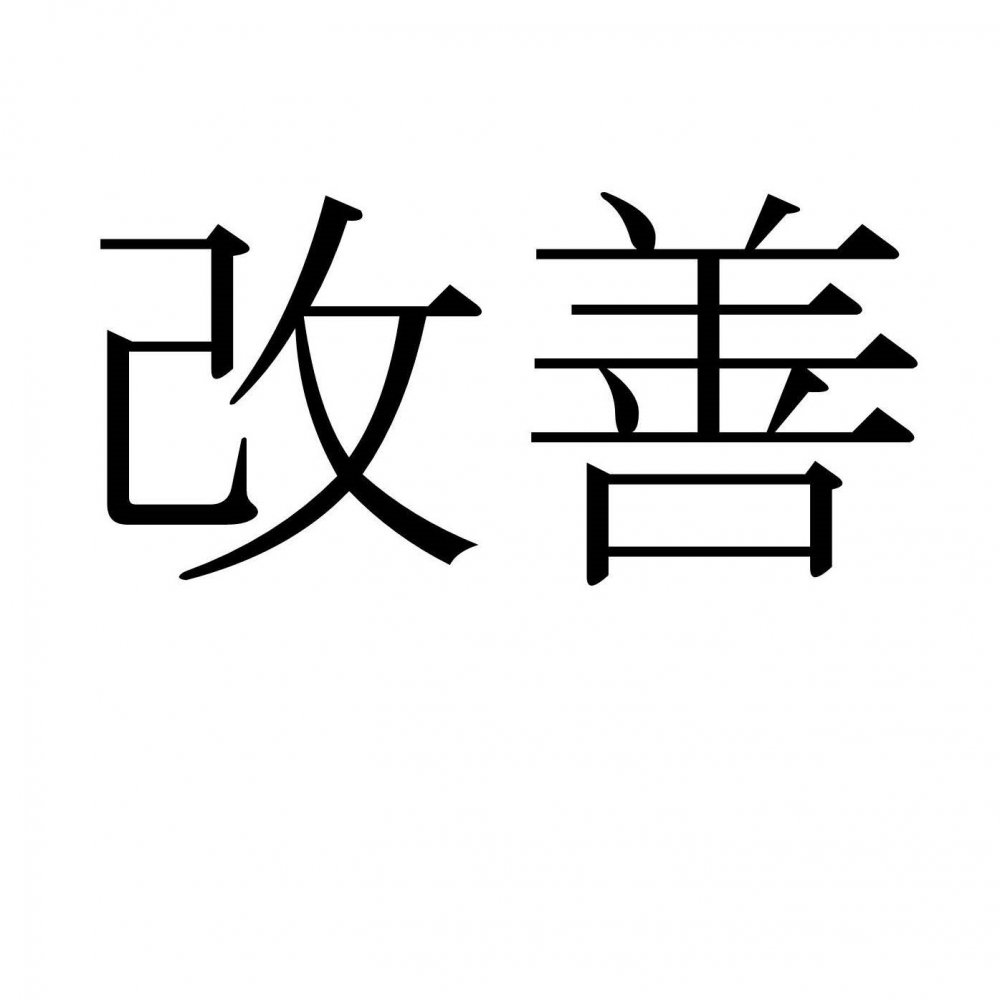KAIZEN – Develop, Design, and Deliver Project Solutions
September 4th, 2023
SUMMARY
SIGMA7 utilizes the KAIZEN process to aid in the development, design, and delivery of solutions to meet our client's unique goals, needs, and objectives
KAIZEN is a business philosophy based upon continuous improvement, challenging status quo, and recognizing the importance of input from all. We utilize the principals of KAIZEN to assist our clients with understanding that change for the better, while it may be difficult, is good.
THE CHALLENGE
Building trust and moving the client and project team beyond status quo is difficult. The design team is frequently met with resistance throughout the project process as there is often a fear of the unknown. Accepting and welcoming change can be difficult for many. The KAIZEN process has proven to be a valuable tool in achieving and realizing the goals of our clients.
SIGMA7’s SOLUTION and the APPLICATION of the PRINCIPLES of KAIZEN
KAIZEN focuses on the importance of the team:
- Inclusion of all personnel as well as team members outside of the organization is key, from C-suite to intern, vendors, consultants, administrative and support staff – no individual lacks importance or value in the development of a solution
- Teamwork is critical to project success
- Achieve objectives by removing obstacles
- Embrace and acknowledge the end-goal of a project
- Understand that Long Term Benefits are derived from Short Term Gains and Improvements
Breaking from STATUS QUO
The team needs to re-focus on process, approach, and objectives. Old ways, thinking, and approach results in consistently similar outcomes.
Breaking from the norm requires the team to:
- Communicate clearly, openly, and honestly
- Think creatively and critically
- Have a desire to innovate and improve
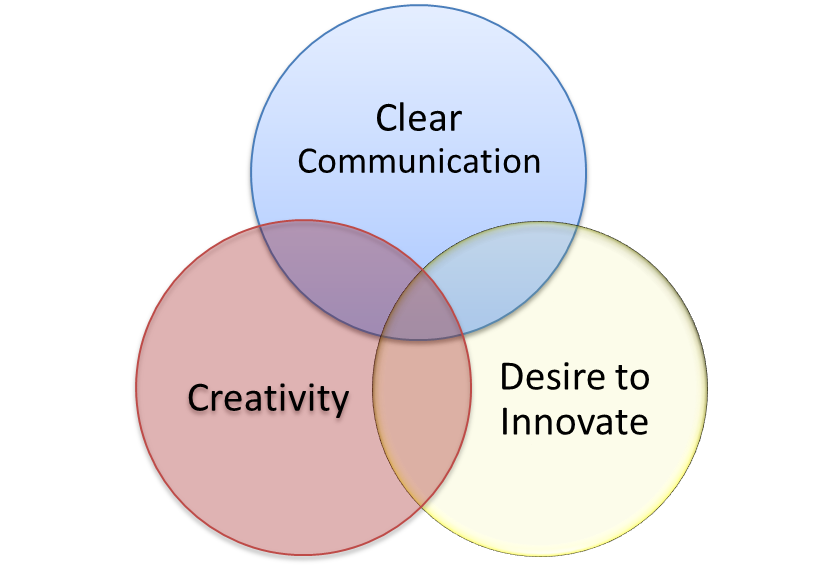
Once the team accepts these basic concepts, the project process becomes:
- Results driven
- Based upon best practices
- Fact-based and utilizes review and analysis
CASE STUDY
APPLICATION OF THE KAIZEN PROCESS
The following case study illustrates utilizing KAIZEN for the determination of issues at the core of the client’s concern. Once identified, the scope of work is defined, and the approach determined. Given this information, the solution is developed, designed, and delivered.
We have simplified the KAIZEN process into the following five (5) phases:
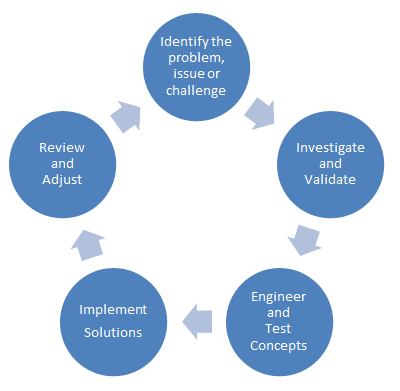
PHASE I – IDENTIFICATION
The client presented the following issues and concerns with their enterprise data center to SIGMA7:
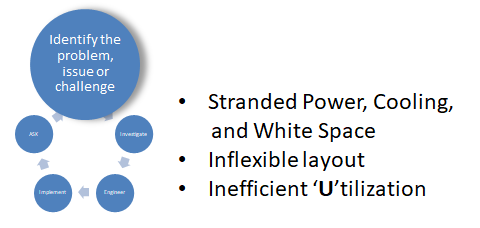
PHASE II – INVESTIGATION

Our A+E team visited the site and observed that the issues went beyond the inefficiencies of layout and cabinet fill. We observed:
- Chilled water supply & return (CHW S&R) pipe interferences
- Criss crossing and dead-ended CHW S&R branch lines
- Air ‘dams’ created by cabling distributed within the access floor plenum
- Banks of densely stacked electrical conduits reducing air flow
- Conflicts and constraints between systems
- Abandoned in place components
SELECT IMAGES OBTAINED DURING INVESTIGATION
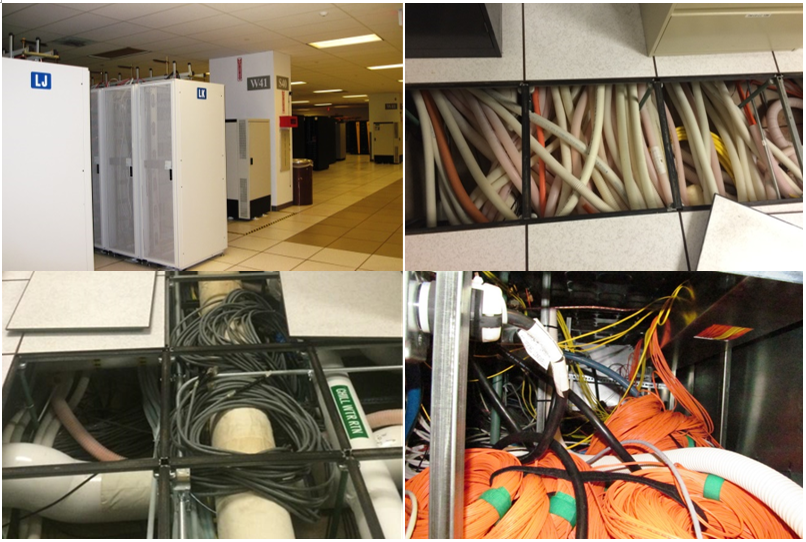
The data center needed an Effective, Long Term Data Center Master Plan Strategy that could accommodate the needs of their current, projected, and future production equipment. The solution needed to provide for:
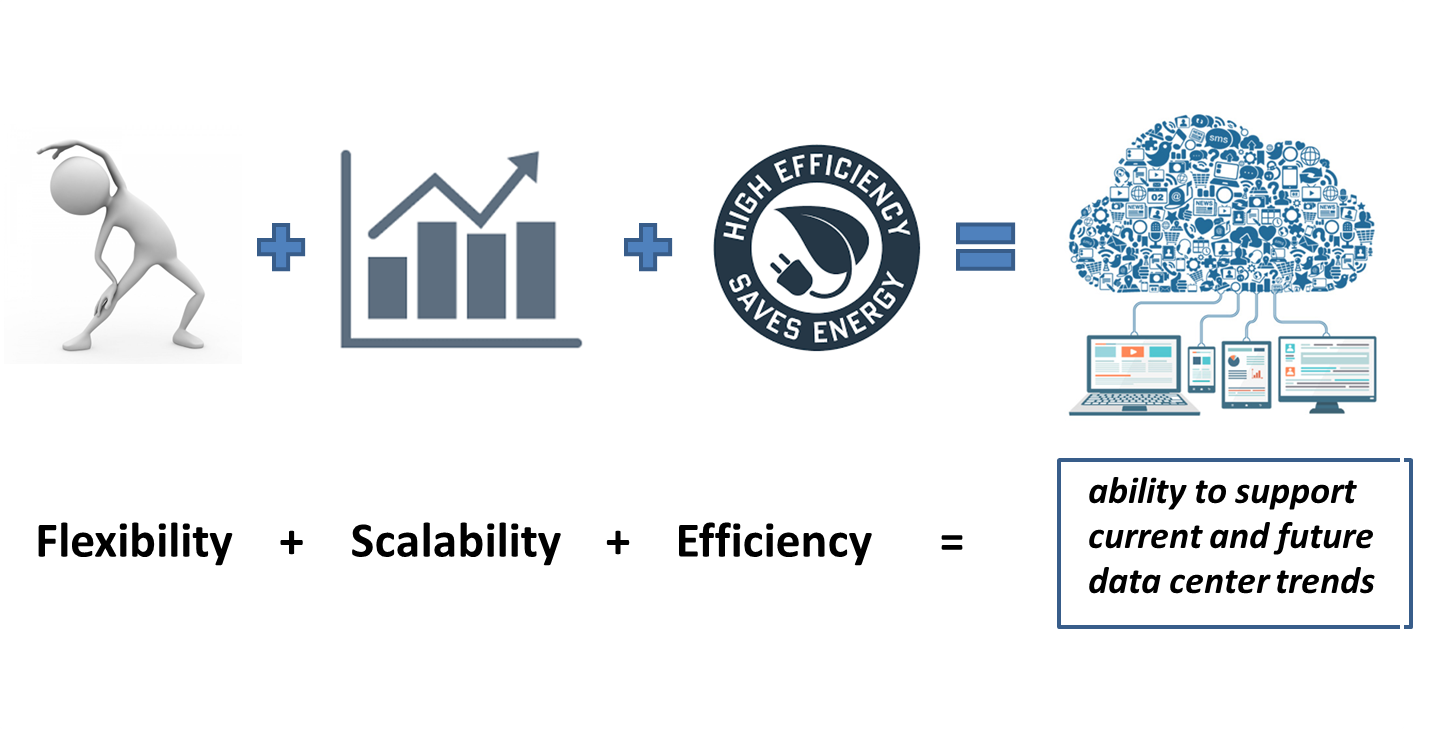
The project team agreed that the project needed to accomplish the following goals and objectives:
- Simplify and Maximize
- Mechanical Distribution
- Electrical Distribution
- Facility Operation and Maintenance
- Re-organize the Data Center
- Throughout the white space (access floor production area)
- Within the floor plenum
- Hot/Cold aisle layout and consistency
- Mechanical Infrastructure and distribution
- Electrical Infrastructure and distribution
- IT/Production Equipment
- Standardize equipment
- Mechanical Equipment (CRAHs)
- Electrical Equipment (PDUs, RPPs, etc.)
- Production Equipment (Configuration, layout, cabinets, containment, etc.)
- Continuous, uninterrupted, and ongoing ‘business-as-usual’ operation a must
PHASE III - ENGINEERING
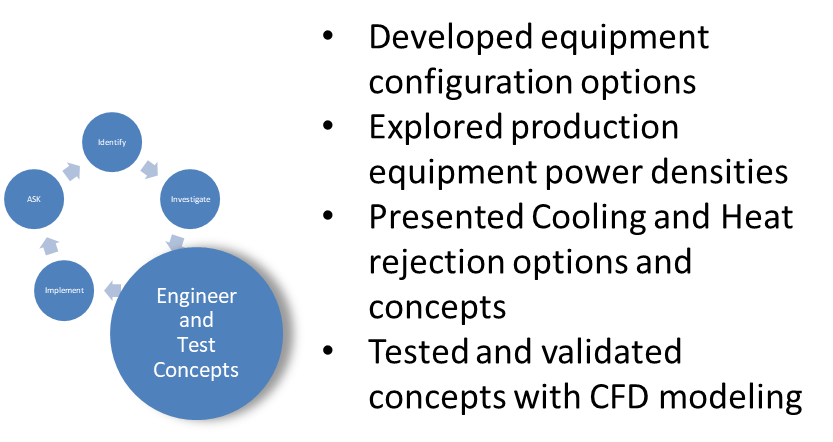
SIGMA7, given the additional input of the client team:
Prepared and completed Computational Fluid Dynamic (CFD) models of the proposed data center solutions to confirm the validity of the POD concept basis of design.
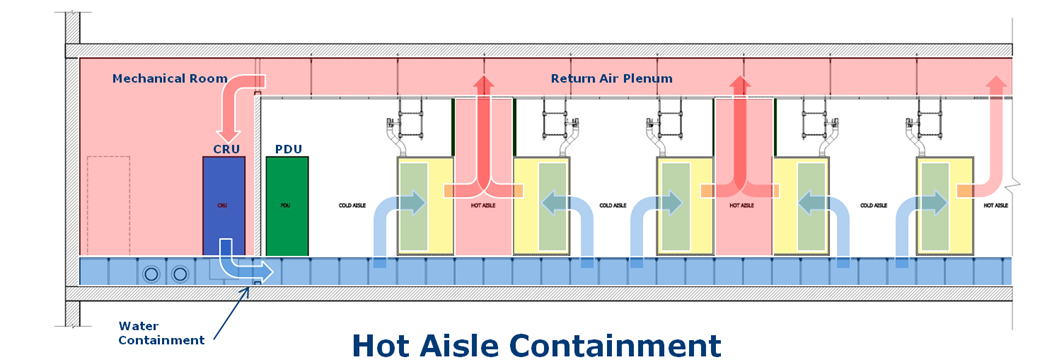
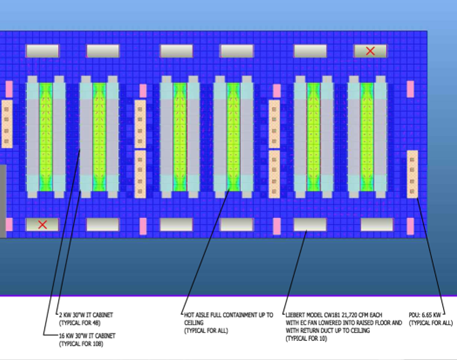

The design concept was based upon a two (2) multi cabinet compute POD module. Each POD includes 26 cabinets, an electrical infrastructure consisting of 2N redundant Power Distribution Units (PDUs) and end-of-row Remote Power Panels (RPPs) and rack mounted A/B PDUs. Cooling and heat rejection supported by N+1 downflow CRAC units that are fed from an updated and reconfigured CHW S&R loop including isolation valves. Hot aisle containment is provided, with the ceiling utilized as a return plenum to the snorkeled CRAC units.
PHASE IV - IMPLEMENTATION
With the design concept validated it was time to move into implementation.
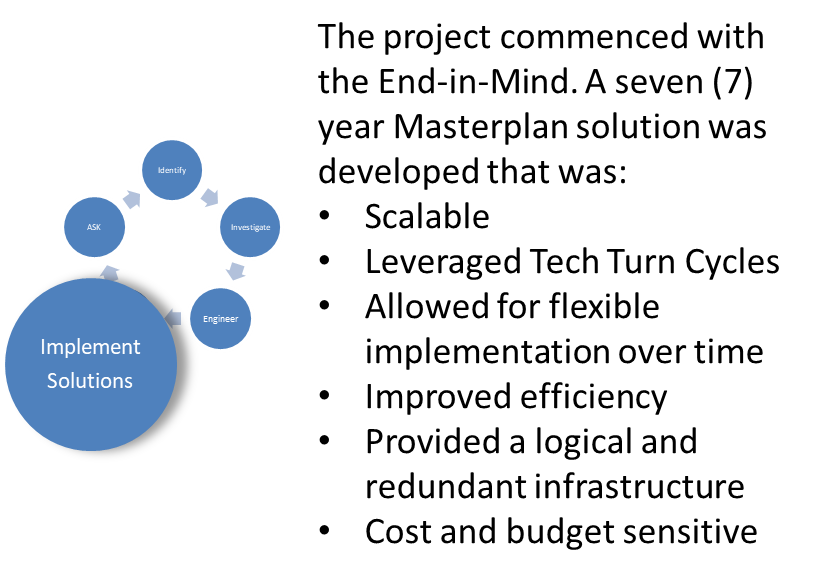
The design team worked hand in hand with the IT and Facilities Engineering Team to coordinate roll out of the IT Moves, Adds, and Changes (MAC) plan while preparing the construction documents for the first two (2) PODs. The initial phase of documentation also included the masterplan approach for the planned modifications necessary to implement the future phases of the overall plan.
Chilled water piping dead ends were eliminated; a true chilled water S&R loop was implemented to support the new PODs.
The electrical distribution was re-organized and simplified including the removal of the low voltage cable plant pinch points and air dams. These improvements ensured adequate airflow would be provided throughout the access floor plenum to support the cooling needs of the increased density of the production equipment.
The POD design also included a refresh of the ceiling plane, featuring new clean room ceiling tiles and energy efficient LED lighting.
The production PODs were developed as a flexible kit of parts to simplify procurement, future installation, and modifications if needed, should there be changes to production equipment or cabinets.
The installation is capable of supporting production cabinets loaded to 16kW once the underfloor dams and obstructions were resolved.
CONSTRUCTION and AFTER IMAGES
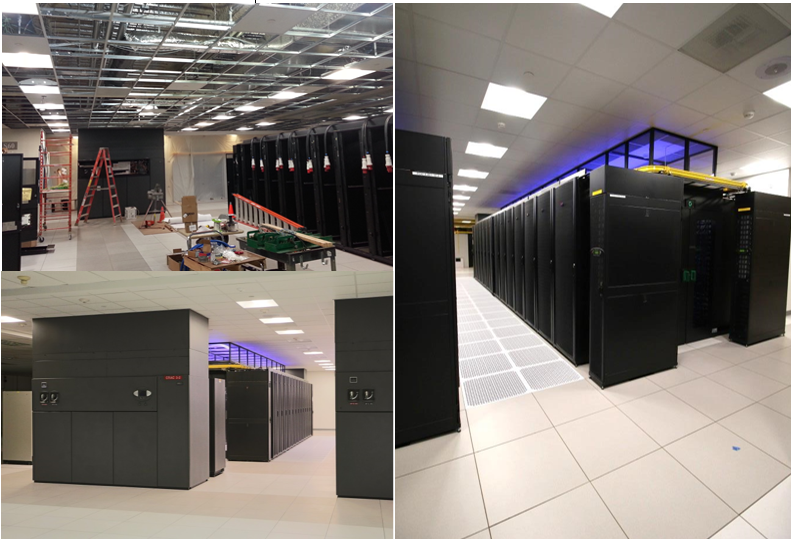
PHASE V - REVIEW
Following the implementation of the PODs, the team reviewed the project goals and objectives, the performance of the team, as well as the end result of the project.

A few minor items were identified. Several adjustments were made to the project plan that were implemented with the later phases of the POD implementation.
The masterplan, consisting of six (6) PODs, has been successfully implemented at each of the client’s enterprise facilities.
ABOUT US
SIGMA7, a full service integrated architectural and engineering firm, provides professional services to clients in the public and private sectors. Our clients are Fortune 500 ranked organizations in the technology, insurance, banking, and financial markets.
Still curious or want to learn more about SIGMA7, our integrated A/E approach, or see how we can assist you and your team?
Please visit SIGMA7design.com, email us at contact@sigma7design.com, or call our office at 212 779.7100 we are here to listen, answer your questions, and would like to learn more about you and your organization as well.

